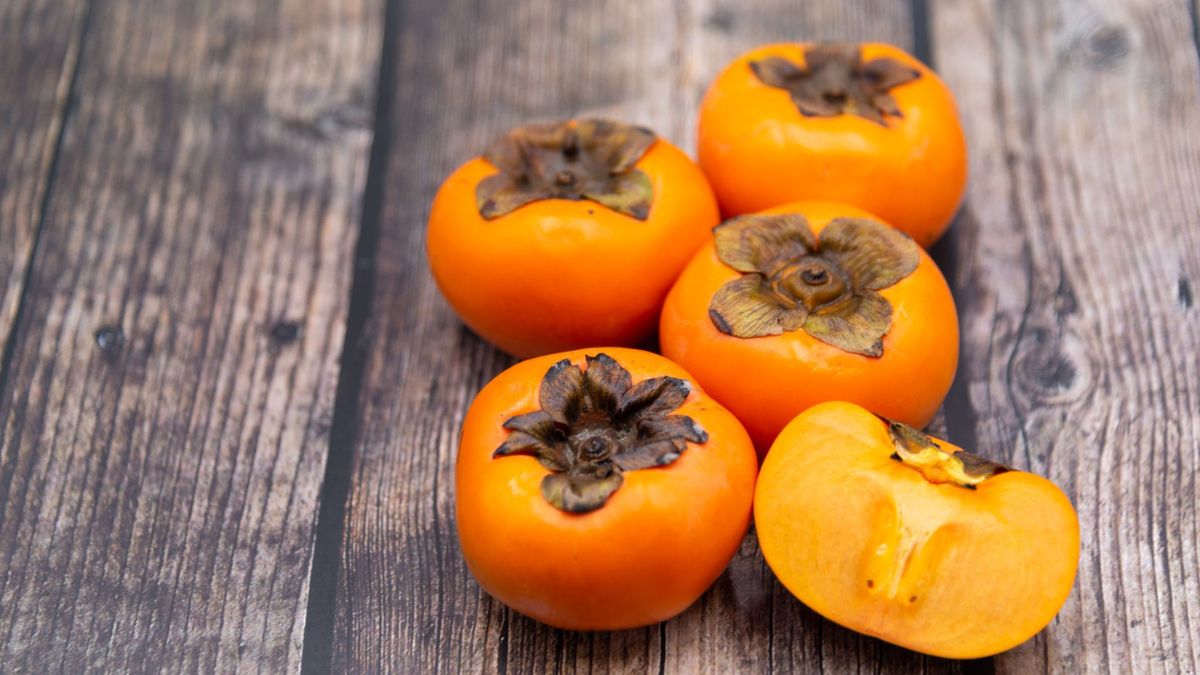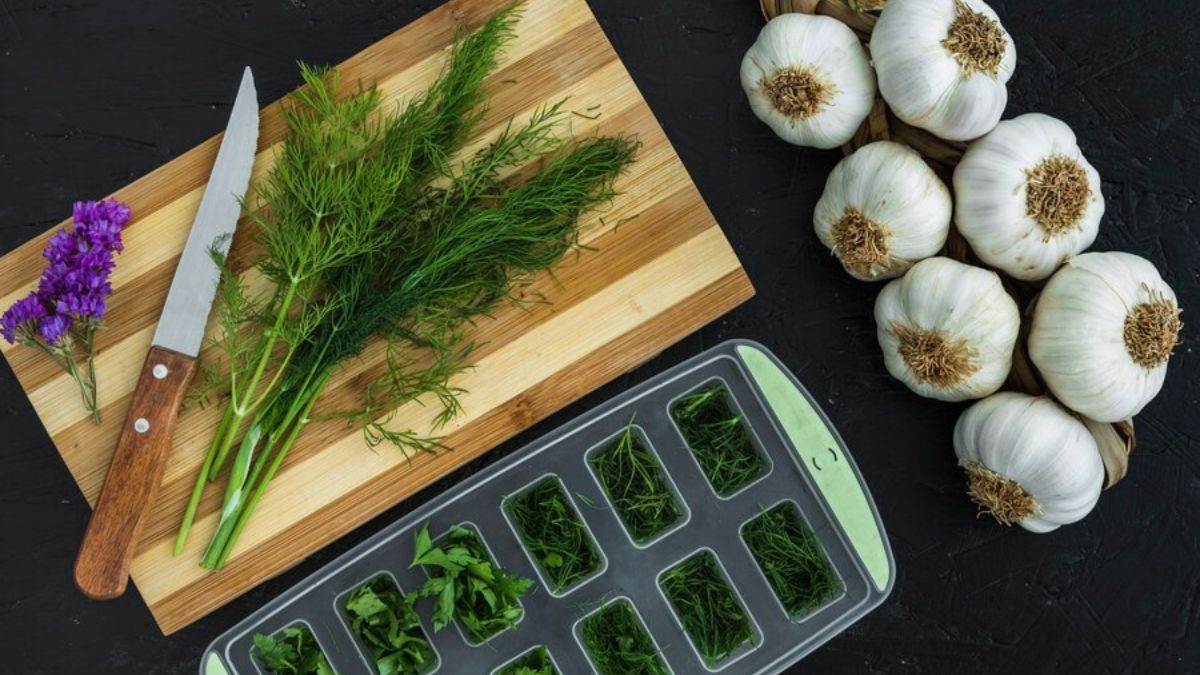FOOD
Why You Should Add Persimon to Your Diet This Fall

As the leaves turn vibrant shades of orange and gold, nature offers us a delicious opportunity to embrace a lesser-known gem: persimons. These sweet, honey-like fruits are not only bursting with flavor but also pack a nutritious punch. If you haven’t yet added persimons to your fall menu, now is the perfect time to discover their unique taste and impressive health benefits. Whether you’re looking for new ways to elevate your meals or simply want to savor something special this season, persimons deserve a spot on your grocery list. Let’s dive into why this fruit should be at the forefront of your diet this autumn!
Health Benefits of Persimons
Persimons are a powerhouse of nutrition, offering numerous health benefits that can enhance your well-being. Rich in dietary fiber, they support digestive health by promoting regularity and preventing constipation.
Loaded with antioxidants, persimons help combat oxidative stress in the body. This may reduce inflammation and lower the risk of chronic diseases.
These vibrant fruits are also packed with vitamins A and C. Vitamin A contributes to healthy vision and skin, while vitamin C boosts your immune system.
Moreover, persimons contain potassium, which is essential for heart health. It helps regulate blood pressure levels and supports proper muscle function.
Including this sweet fruit in your diet can also aid weight management due to its low calorie count paired with high nutrient density. They satisfy cravings without piling on extra calories or sugar.
How to Choose and Store Persimons
Choosing the right persimon can transform your culinary experience. Look for fruits that are firm yet slightly soft to the touch. A little give indicates ripeness, while overly mushy ones may have gone past their prime.
Color matters too. Vibrant orange skin signifies sweetness and flavor. Avoid any with blemishes or dark spots, as these can signal overripeness or decay.
Once you’ve selected your persimons, proper storage is key to maintaining freshness. If they’re not quite ripe, keep them at room temperature until they soften. Placing them in a paper bag can speed up this process.
For longer storage, refrigerate ripe persimons in a breathable container. They’ll stay fresh for about a week this way. Remember to check them regularly; even refrigerated fruits need attention!
Delicious Ways to Incorporate Persimons into Your Diet
Persimons are versatile and can elevate many dishes. Slice them up for a refreshing addition to salads. Their sweet, honey-like flavor pairs wonderfully with mixed greens, nuts, and cheese.
For breakfast lovers, try adding persimon slices to your oatmeal or yogurt bowl. The natural sweetness enhances the meal without added sugars.
Baking? Persimons make an excellent ingredient in muffins or quick breads. They add moisture and a distinct taste that will surprise your guests.
Don’t forget about smoothies! Blend ripe persimons with bananas and spinach for a nutrient-packed drink that’s as delicious as it is healthy.
You can even grill them for a unique side dish. Just brush slices with olive oil, season lightly, and roast until caramelized.
There are endless possibilities when it comes to incorporating this delightful fruit into your meals. Let your creativity flow!
Nutritional Comparison with Other Fall Fruits
Persimons stand out among fall fruits with their unique flavor and impressive nutrient profile.
When compared to apples, persimons contain higher levels of vitamin A, which is crucial for eye health. The vibrant orange color hints at this abundance of antioxidants.
Pears are another popular choice in the autumn season. While both fruits offer dietary fiber, persimons pack a punch with more soluble fiber that aids digestion effectively.
Cranberries often steal the spotlight during Thanksgiving. However, persimons provide a sweeter alternative and boast fewer calories than cranberries while still delivering essential vitamins.
Pumpkin gets plenty of attention as a seasonal staple. But don’t overlook persimon’s ability to contribute similarly beneficial nutrients without the heaviness associated with pumpkin dishes.
Fun Facts About Persimons
Persimons, often called the “divine fruit,” have an intriguing history dating back thousands of years. Originally cultivated in East Asia, they are now enjoyed globally.
Did you know there are two main types? The astringent Fuyu and the non-astringent Hachiya each offer unique flavors and textures.
These fruits thrive in subtropical climates, making them popular in places like California. As fall arrives, persimon harvests become a delightful seasonal treat.
Another interesting fact is that persimons can ripen off the tree! Simply leave them at room temperature to achieve that sweet softness everyone loves.
In addition to their delicious taste, persimons boast vibrant colors ranging from golden yellow to deep orange. Their stunning appearance makes them a standout choice for any fruit platter or dish.
These fruits contain high levels of tannins when unripe—this quality contributes to their distinctive taste profile once they fully mature.
Conclusion: Why You Should Give Persimons a Try This Fall
As the leaves change color and fall settles in, it’s the perfect time to explore new flavors. Persimons offer a unique sweetness that can bring warmth to your meals. They’re not just delicious; they also pack a nutritional punch, making them an excellent addition to your autumn diet.
By choosing ripe persimons, you can enjoy their juicy texture and vibrant taste while reaping health benefits like improved digestion and heart health. Incorporating this versatile fruit into salads, desserts, or even savory dishes allows for endless culinary creativity.
With their striking appearance and rich history, persimons are more than just another seasonal fruit—they’re an experience waiting to be had. So why not give them a try? You might find yourself looking forward to persimon season each year!
FOOD
From Plant to Plate: How to Prepare and Enjoy Monstera Fruit

Have you ever heard of monstera fruit? This tropical delight is not just a decorative plant but also a delicious and nutritious treat waiting to be explored. With its unique appearance and flavor, monstera fruit is quickly becoming the talk of health-conscious foodies and culinary adventurers alike. Imagine biting into a juicy piece that tastes like a blend of pineapple, banana, and mango – it’s an explosion of fruity goodness! If you’re ready to dive into the world of monstera fruit, this guide will take you on an exciting journey from plant to plate. Get ready to discover how to choose, prepare, and enjoy this exotic treasure in your kitchen!
Nutritional Value and Health Benefits of Monstera Fruit
Monstera fruit, often referred to as “Swiss cheese plant fruit,” is not just a tropical delight; it’s also packed with nutrients. Rich in vitamins C and B complex, this exotic treat supports immune function and boosts energy levels.
The fiber content in monstera fruit promotes digestive health. A diet high in fiber can help maintain healthy bowel movements and prevent constipation.
Additionally, monstera fruit contains antioxidants that may combat oxidative stress. These compounds are beneficial for skin health and overall well-being.
Its natural sweetness also makes it an excellent choice for those seeking healthier snack alternatives. Plus, low in calories, you can indulge without the guilt while reaping its myriad benefits.
Incorporating monstera into your meals could also help regulate blood sugar levels due to its unique combination of sugars and fibers. This makes it a smart option for those mindful of their glycemic index.
How to Choose and Prepare Monstera Fruit
Choosing the right monstera fruit is key to enjoying its unique flavor. Look for fruits that are slightly yellow and have a few brown spots. These signs indicate ripeness, as unripe monstera fruit can be toxic.
Once you’ve selected your fruit, preparing it is simple. Start by washing the exterior thoroughly to remove any dirt or contaminants.
Next, slice the fruit lengthwise to reveal its creamy flesh inside. The texture resembles a custard with pockets of sweetness that burst in your mouth.
Use a spoon to scoop out the edible parts while discarding any remaining skin and core sections. It’s important not to eat the unripe segments, as they contain high levels of calcium oxalate which can cause discomfort.
Now you’re ready to enjoy this tropical treat! It’s perfect on its own or as an addition to various dishes.
Delicious Monstera Fruit Recipes
Monstera fruit is not just a beautiful tropical addition to your plate; it can also be the star of some delicious dishes. Try turning this exotic fruit into a refreshing smoothie. Blend ripe monstera with coconut milk, banana, and a splash of lime for an energizing drink.
For a unique dessert, consider making monstera fruit salsa. Dice the flesh and mix it with diced mango, red onion, cilantro, and jalapeño for a sweet-spicy treat that pairs perfectly with grilled fish or chicken.
If you’re feeling adventurous in the kitchen, you could create monstera-infused ice pops. Simply blend the fruit with fresh juice—like pineapple or orange—and pour into molds for a tropical frozen delight.
These recipes highlight how versatile monstera fruit can be while adding vibrant flavors to your meals. Embrace its potential and enjoy experimenting in your kitchen!
Other Creative Uses for Monstera Fruit
Monstera fruit isn’t just for eating. Its unique flavor can elevate beverages too. Blend the flesh into smoothies or cocktails for a tropical twist.
You can also use it in desserts. Incorporate monstera fruit into sorbets or ice creams to surprise your taste buds with its sweet, juicy essence.
For those who enjoy crafting, consider using the skin of the ripe monstera as an eco-friendly wrapping option. It adds a rustic touch to gifts while being biodegradable.
Don’t overlook its aesthetic appeal either! Use slices of monstera fruit as vibrant garnishes on platters or charcuterie boards, bringing color and intrigue to your spread.
Experiment with infusions. Try steeping monstera fruit in spirits or vinegars for homemade concoctions that will impress guests at any gathering.
Conclusion: Incorporating Monstera Fruit into Your Diet for a Unique and Nutritious Experience
Embracing monstera fruit in your diet opens up a world of unique flavors and nutritional benefits. This tropical delight not only tantalizes the taste buds but also offers an array of vitamins, antioxidants, and fiber that support overall health.
As you explore different ways to enjoy monstera fruit, consider incorporating it into smoothies, salads, or desserts for a refreshing twist. Its versatility means it can be easily adapted to various cuisines and meal types.
Whether you’re enjoying it fresh off the plant or whipping up delicious recipes at home, monstera fruit is a fantastic addition to any culinary adventure. So go ahead—give this exotic fruit a try and elevate your meals with its delightful flavor profile. Experiencing the journey from plant to plate has never been so rewarding!
FOOD
The Health Benefits of Scallions: A Nutritional Powerhouse in Your Kitchen

Scallions, also known as green onions or spring onions, are more than just a garnish; they are a versatile ingredient that can elevate your dishes in both flavor and nutrition. These vibrant little stalks pack a punch with their crisp texture and mild taste, making them an essential addition to any kitchen. But did you know that scallions offer impressive health benefits too? From boosting your immune system to enhancing digestion, these nutritional powerhouses deserve a spotlight on your plate. Let’s dive into the world of scallions and discover what makes them such an incredible choice for healthy eating!
The Nutritional Value of Scallions
Scallions, also known as green onions, pack a punch when it comes to nutrition. They are low in calories but high in essential vitamins and minerals. A single serving contains vitamin K, which is vital for bone health.
These vibrant greens are rich in antioxidants. Compounds like quercetin can help combat inflammation and support overall wellness.
You’ll find scallions provide a good source of dietary fiber too. This aids digestion and keeps you feeling full longer.
Additionally, they contain folate, which plays an important role during pregnancy by supporting fetal development. Scallions also deliver small amounts of calcium and potassium for heart health.
Incorporating these nutrient-dense vegetables into your meals not only adds flavor but boosts nutritional content without extra calories or fat.
Health Benefits of Scallions
Scallions are more than just a garnish. They pack a punch when it comes to health benefits.
These vibrant green vegetables are low in calories yet high in essential nutrients. They’re an excellent source of vitamins A, C, and K. These vitamins support immune function and promote healthy skin.
The antioxidants found in scallions help combat free radicals, which can lead to chronic diseases. Their anti-inflammatory properties may also reduce the risk of conditions like arthritis.
Additionally, scallions contain fiber that aids digestion and promotes gut health. The presence of quercetin can assist in lowering blood pressure and improving heart health.
Incorporating scallions into your meals not only enhances flavor but also boosts nutritional value effortlessly. Whether raw or cooked, they provide numerous advantages to support overall well-being.
How to Incorporate Scallions into Your Diet
Incorporating scallions into your diet is both simple and rewarding. Their mild onion flavor enhances a variety of dishes without overwhelming them.
Chop fresh scallions and toss them into salads for a crisp bite. They add color and freshness, making any salad pop.
For breakfast, consider adding sliced scallions to scrambled eggs or an omelet. This brings depth to your morning routine.
Soups also benefit from the addition of these green beauties. Stir in chopped scallions towards the end of cooking for a burst of flavor and nutrition.
Don’t overlook their potential as a garnish! A sprinkle on tacos, stir-fries, or grilled meats elevates presentation while enhancing taste.
If you’re feeling adventurous, blend scallions into dips or sauces. They can transform everyday recipes with ease and flair.
Delicious Recipes Using Scallions
Scallions add a fresh, vibrant flavor to a variety of dishes. One simple way to enjoy them is by tossing them into a stir-fry. Their mild onion taste complements vegetables and proteins beautifully.
For breakfast, try adding chopped scallions to scrambled eggs or an omelet. The result? A delightful kick that elevates your morning routine.
Looking for something unique? Create scallion pancakes. Mix flour with water, finely chopped scallions, and pan-fry until crispy. These make for an excellent appetizer or snack.
Don’t forget salads! Thinly sliced scallions can brighten up any salad mix while providing extra crunch and zest.
Consider using them in dips too. Blend sour cream with minced scallions for a tasty topping on baked potatoes or chips.
The versatility of these green wonders makes them a must-have ingredient in your kitchen repertoire!
Growing Your Own Scallions at Home
Growing your own scallions at home is both easy and rewarding. You can start with store-bought scallions by simply saving the white roots after using the green tops. Place them in a glass of water, ensuring the roots are submerged while keeping the greens above.
Within days, you’ll notice new growth sprouting from the tops. Change the water every few days to keep it fresh. Once they reach about six inches in height, they’re ready for harvesting.
If you prefer soil gardening, plant scallion bulbs in well-drained soil with plenty of sunlight. Space them about four inches apart for optimal growth.
Keep the soil moist but not soggy. With just a little care, you’ll have fresh scallions readily available right from your kitchen garden. The satisfaction of picking your own produce adds an extra layer of flavor to any dish!
Conclusion
Scallions are more than just a garnish; they’re a versatile ingredient that packs a punch in terms of flavor and nutrition. With their vibrant taste and impressive health benefits, incorporating scallions into your meals can elevate both the taste and nutritional profile of your diet.
Whether you’re looking to boost your immune system, improve heart health, or simply add some zest to dishes, scallions are an excellent choice. Their low-calorie count combined with essential vitamins makes them perfect for anyone aiming for a balanced diet.
Experimenting with different recipes is part of the fun. From salads to soups and stir-fries, there’s no shortage of ways to enjoy these green delights. Plus, if you have space at home, growing your own scallions can be incredibly rewarding—and easy!
So next time you’re at the grocery store or browsing through your garden options, consider adding this nutritional powerhouse to your kitchen staples. Your body will thank you!
FOOD
Convection Oven vs. Traditional Oven: Which One is Right for You?

When it comes to cooking, the right oven can make all the difference. With so many options available, two types often stand out: convection ovens and traditional ovens. They both have their unique features and functionalities that cater to different cooking styles and preferences. Are you wondering which one is a better fit for your kitchen? Whether you’re an aspiring chef or just someone who enjoys whipping up meals at home, understanding these two appliances will help you make an informed choice. Let’s dive into how each type of oven operates, their advantages, and what factors you should consider before making a decision. Your culinary adventure awaits!
How Convection Ovens Work
Convection ovens operate using a simple yet effective principle: hot air circulation. They come equipped with a fan and an exhaust system that distribute heat evenly throughout the cooking cavity.
When you turn on a convection oven, it generates warmth from heating elements. The built-in fan then pushes this hot air around the food, reducing cooking time and ensuring even browning. This method helps eliminate cold spots that traditional ovens often struggle with.
The result? Foods cook more uniformly and quickly. For instance, cookies bake to perfect crispiness while roasts develop a beautiful golden crust without overcooking inside.
This technology offers flexibility in meal preparation, allowing for multiple trays of food at once without compromising quality. You can achieve restaurant-level results right in your kitchen!
How Traditional Ovens Work
Traditional ovens operate using a straightforward heating method. They rely on either gas or electric elements to generate heat. When you set the temperature, the heat source activates and warms up the interior.
The design usually consists of an insulated box that traps this heat inside. As it builds up, air circulates within the oven chamber, cooking food evenly from all sides. This process is known as radiant heating.
In most cases, traditional ovens have a single heating element at the bottom for baking and another at the top for broiling. The user can adjust these settings depending on their cooking needs.
Cooking times may vary based on what you’re preparing. Unlike convection ovens, traditional models do not circulate air actively; they depend more on natural airflow to achieve even results across your dishes.
Advantages of Convection Ovens
Convection ovens offer a range of benefits that make them appealing for modern kitchens. One major advantage is their ability to cook food more evenly. The fan circulates hot air, eliminating cold spots and ensuring that everything bakes uniformly.
Speed is another perk. Dishes often cook faster in a convection oven compared to traditional models. This can save you valuable time during busy weeknights or when entertaining guests.
Energy efficiency also stands out with convection ovens. They typically require lower temperatures, which can reduce energy consumption over time and help lower utility bills.
For those who enjoy experimenting with recipes, the versatility of a convection oven allows for various cooking techniques. Whether roasting vegetables or baking desserts, it adapts well to different culinary styles while delivering delicious results every time.
Advantages of Traditional Ovens
Traditional ovens offer a few notable advantages that many home cooks cherish. Their straightforward design allows for consistent and reliable cooking results.
These ovens provide even heating, ensuring that your casseroles, roasts, and baked goods cook through thoroughly without hot spots. With no fan to disturb the environment inside the oven, delicate dishes like soufflés and meringues can rise without any interference.
Another perk is their versatility. Traditional ovens often come with multiple settings such as baking, broiling, or roasting. This adaptability means you can tackle various recipes with ease.
Additionally, traditional ovens typically have a larger capacity than convection models. This spaciousness makes them ideal for preparing large meals or multiple dishes at once.
Cost-effectiveness is also worth mentioning; traditional ovens are generally less expensive upfront compared to their convection counterparts while still delivering excellent performance in the kitchen.
Factors to Consider when Choosing Between the Two
When deciding between a convection oven and a traditional oven, consider your cooking habits. Do you often bake in large batches? A convection oven might be the perfect fit for evenly baked cookies or cakes.
Think about the types of dishes you enjoy preparing. If roasting meats and vegetables is your thing, convection ovens can speed up the process while ensuring crispy textures. Traditional ovens excel at slow baking, making them ideal for classic recipes that require careful attention.
Space is another key factor. Convection models tend to have a larger footprint due to their fans and systems but offer more versatility in cooking methods.
Also, consider energy efficiency. Convection ovens typically cook faster and at lower temperatures than traditional ones, potentially reducing energy costs over time.
Reflect on your budget. While some high-end models may come with advanced features, there are also affordable options available that meet basic needs effectively.
Conclusion: Which Oven is Right for You?
Choosing between a convection oven and a traditional oven ultimately depends on your cooking style and needs. If you value speed, efficiency, and even cooking, the convection oven might be your best bet. It circulates hot air for faster results, making it ideal for baking cookies or roasting meats evenly.
On the other hand, if you prefer classic methods of cooking with simplicity in mind, a traditional oven may suit you better. Its straightforward functionality allows for familiar recipes without any adjustments needed.
Consider factors like what meals you’ll prepare most often, how much space is available in your kitchen, and whether you’re willing to adjust some of your favorite recipes to fit a new appliance’s unique features. Take time to evaluate each option’s pros and cons before deciding which one aligns with your culinary aspirations. Your choice could pave the way for delightful dishes that meet both convenience and taste preferences!
-

 TOPIC1 week ago
TOPIC1 week agoIs Checwifeswap Right for You? Pros and Cons Explained
-

 TOPIC1 month ago
TOPIC1 month agoThe Significance of 17029009482: An In-Depth Exploration
-

 TOPIC1 week ago
TOPIC1 week agoWhy Magdalenavuk15 is Making Waves in the Blogging Community
-

 TOPIC1 month ago
TOPIC1 month agoTinkerdinky: A Playful Approach to Innovation and Design
-

 TOPIC1 month ago
TOPIC1 month agoTop Features of the Denso 10PA17 447220-4771 You Should Know
-

 TOPIC2 weeks ago
TOPIC2 weeks agoThe Evolution of ICS15014849: What You Need to Know
-

 HEALTH1 month ago
HEALTH1 month agoThe Benefits and Risks of Emervuy Surgery Explained
-

 TOPIC4 weeks ago
TOPIC4 weeks agoTronics Orul1108: Revolutionizing Your Tech Experience
